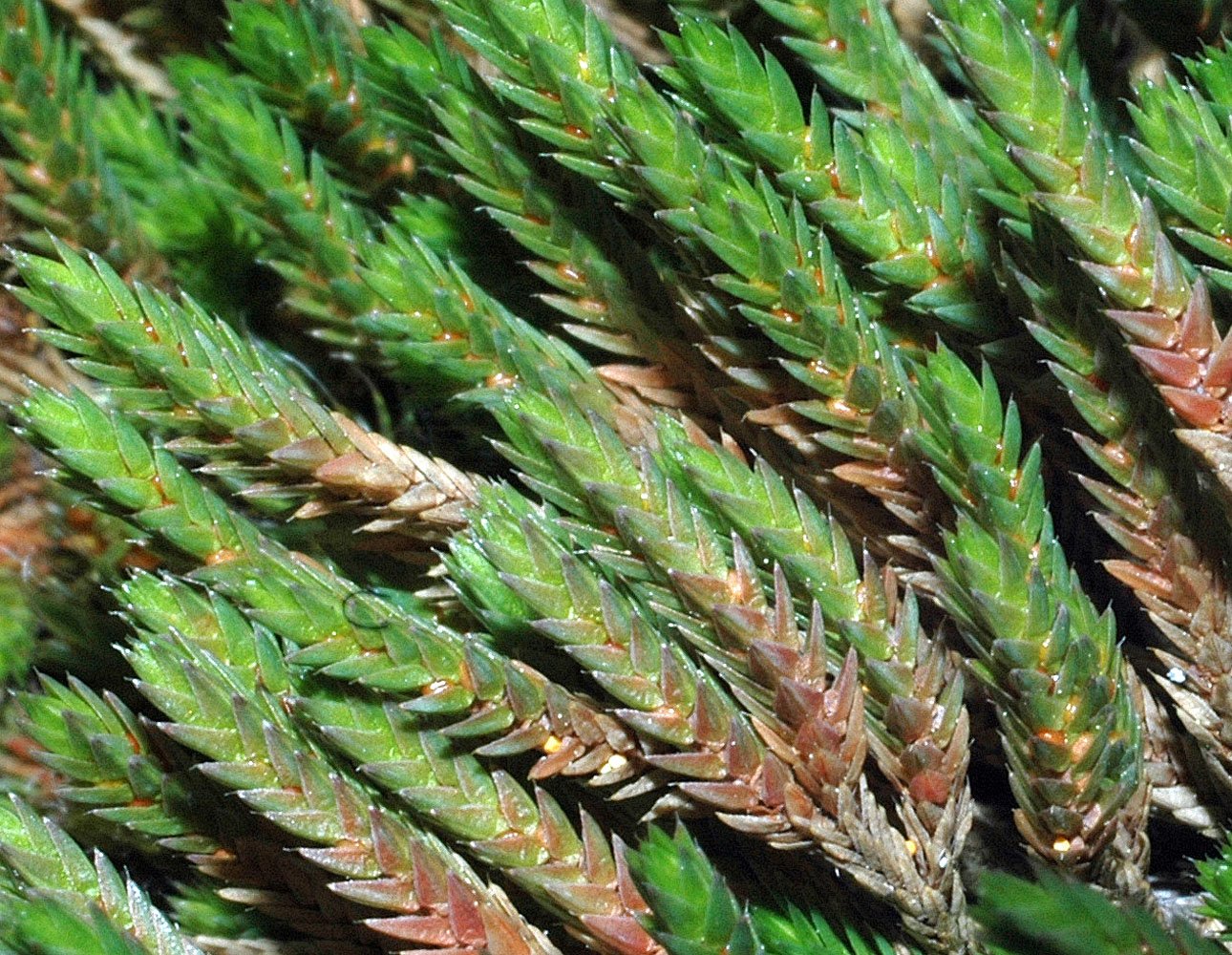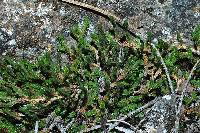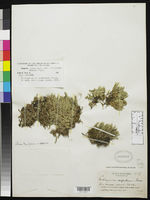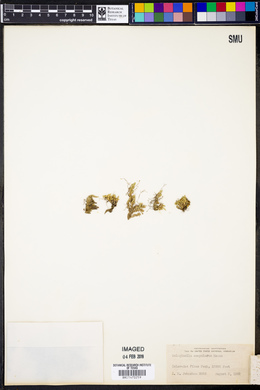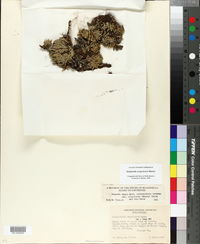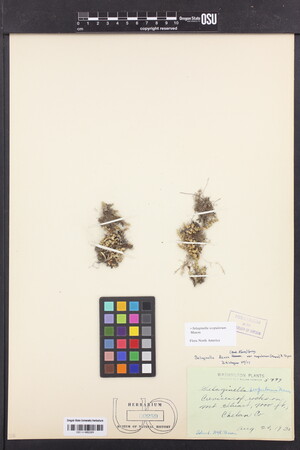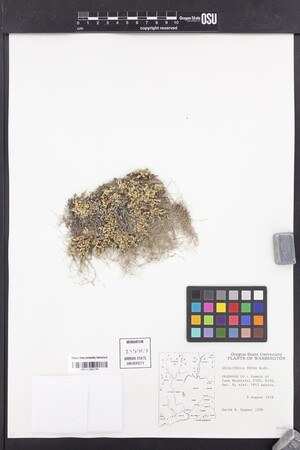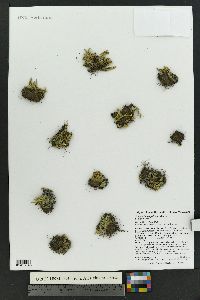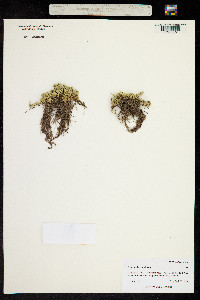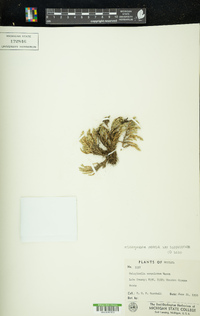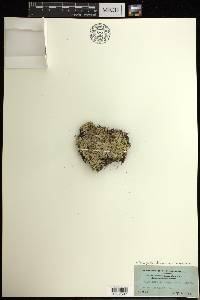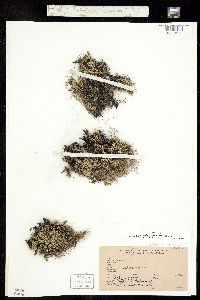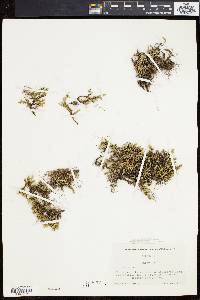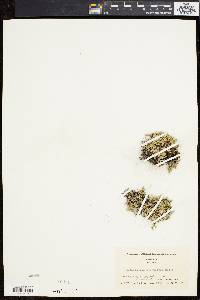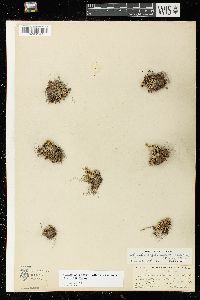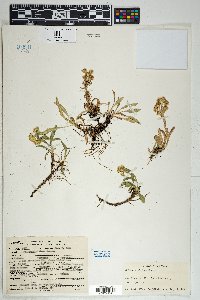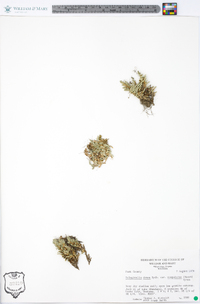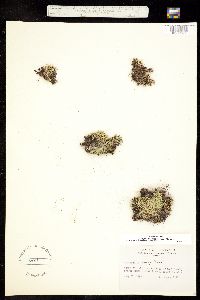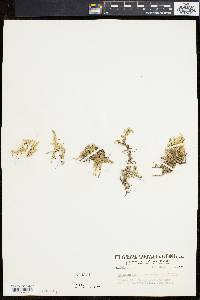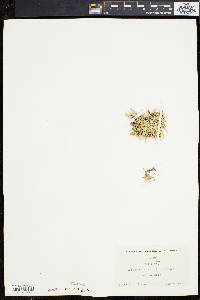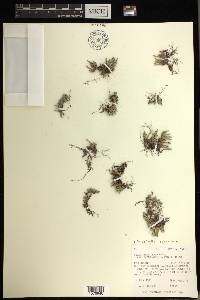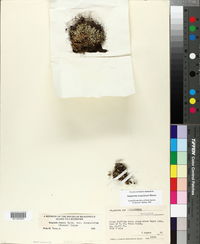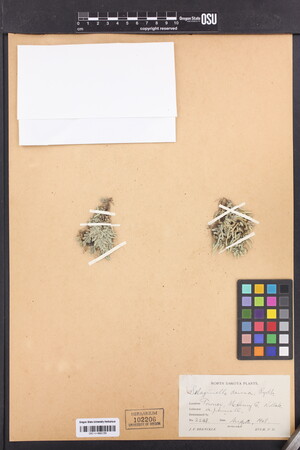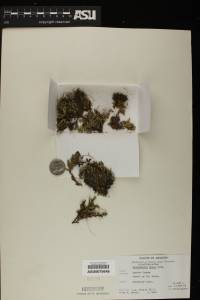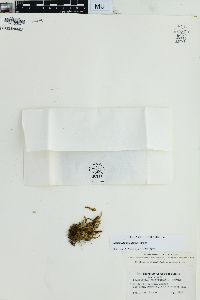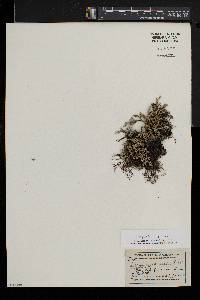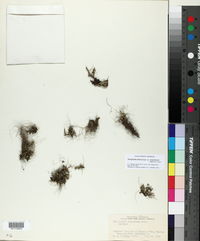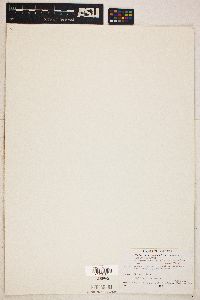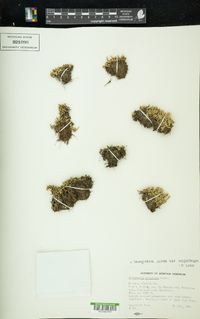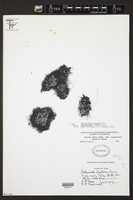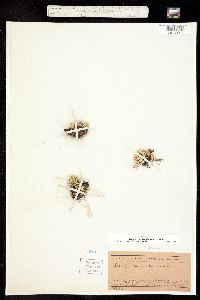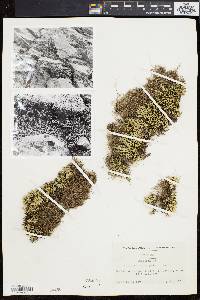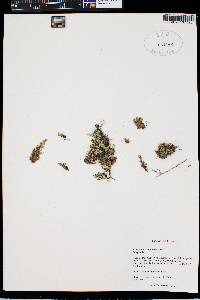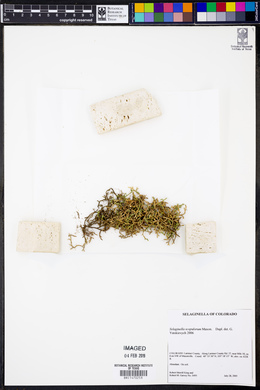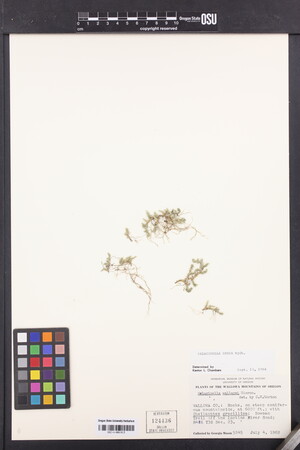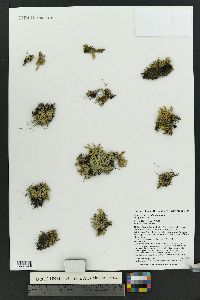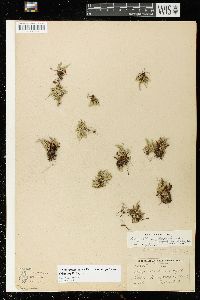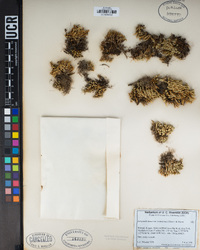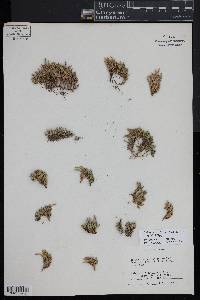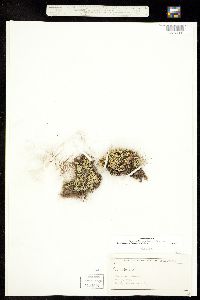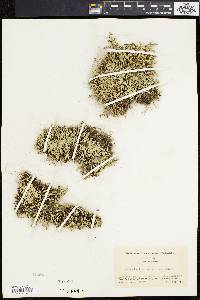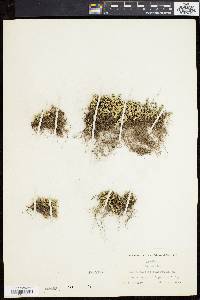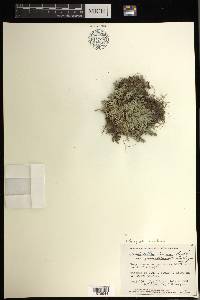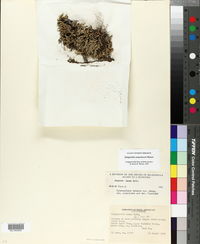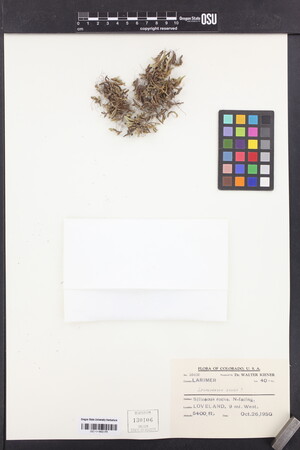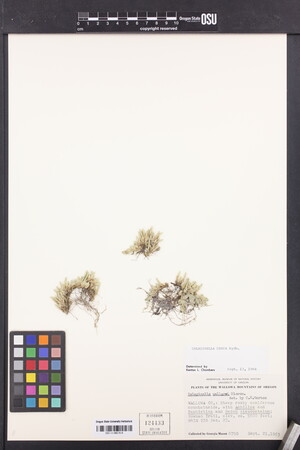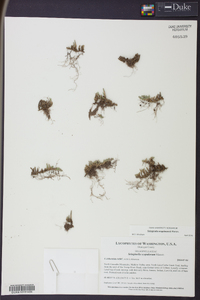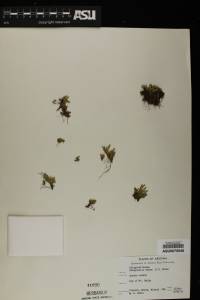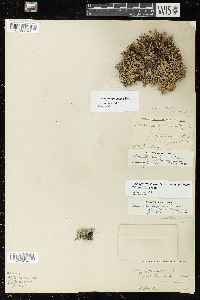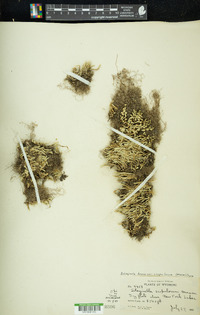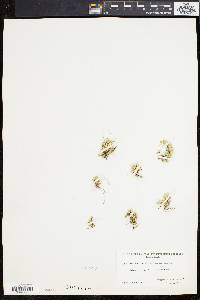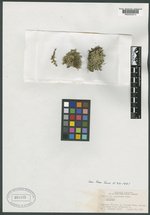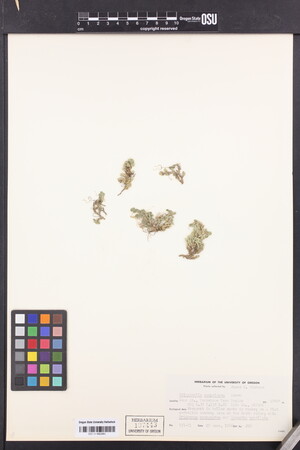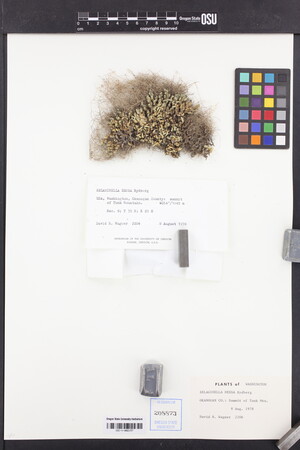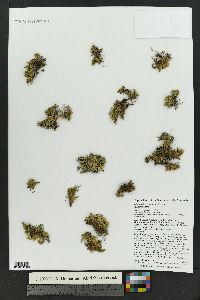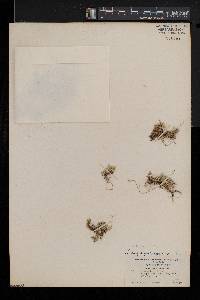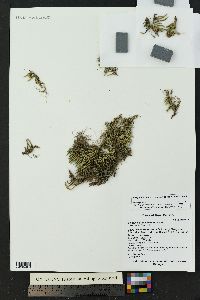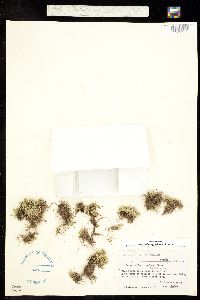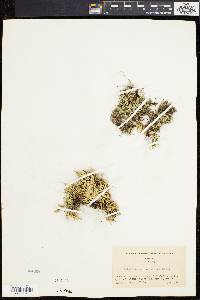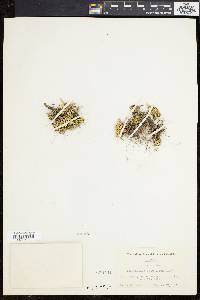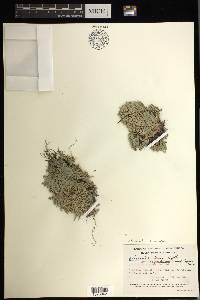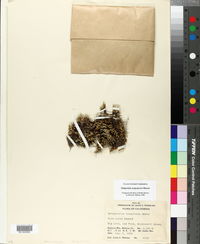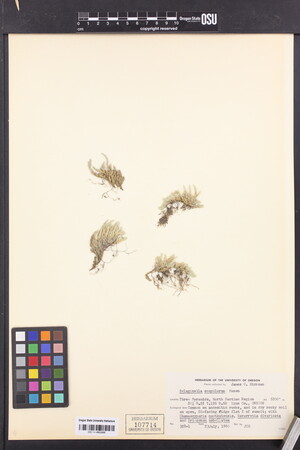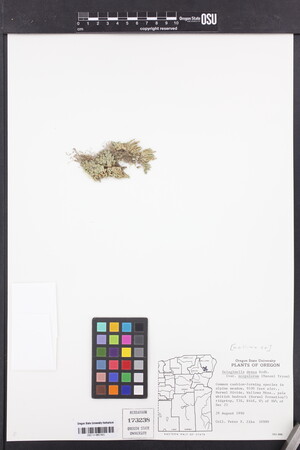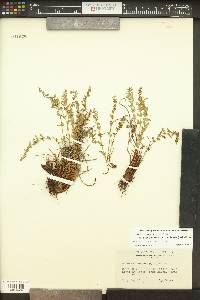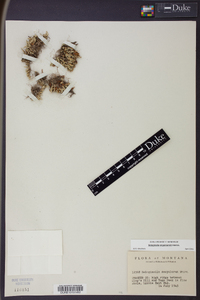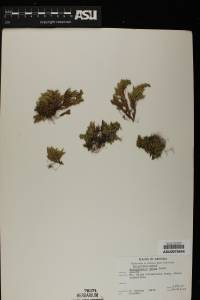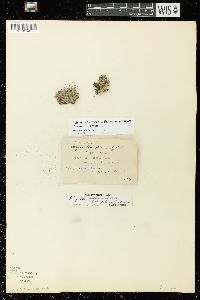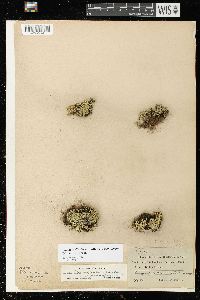
|
|
|
|
Family: Selaginellaceae
Rocky Mountain spikemoss
[Selaginella densa var. scopulorum (Maxon) R. Tryon] |
LEAVES: 2.5-4.5 mm long, the margins relatively short-cilate, cilia 0.02-0.07 mm long, the tip lacking a seta or with a seta 0.4-1.2 mm long, this glabrous, sparsely denticulate, or sparsely puberulent. SPOROPHYLLS: with the margins ciliate proximally grading to denticulate distally, the tip lacking a seta or with a short poorly differentiated seta. [S. scopulorum Maxon]. NOTES: See also parent taxon. Exposed rock ledges and rock outcrops in high mountains on volcanic substrates: Apache Co. (Fig. 1B); 3250-3500 m (10,650-11,500 ft); WA to MN s to n CA, AZ, and NM; w Can. Some botanists consider this taxon to represent a separate species. However, Tryon (1955) indicated that some plants at the summit of Mt. Baldy, are somewhat intermediate in morphology with var. densa. The situation requires more detailed biosystematic study. REFERENCES: Yatskievych, G. and M. D. Windham. 2009. Vascular Plants of Arizona: Selaginellaceae. CANOTIA 5 (1): 39-48. Plants terrestrial or on rock, forming cushionlike or rather loose mats. Stems decumbent or creeping, not readily fragmenting, irregularly forked, without budlike arrested branches, tips straight; main stem upperside and underside structurally slightly different, conspicuously or inconspicuously indeterminate, lateral branches radially symmetric, conspicuously determinate, strongly ascending, 1--2-forked. Rhizophores borne on upperside of stems, throughout stem length, 0.25--0.45 mm diam. Leaves monomorphic, in poorly defined pseudowhorls of 4 or 6, tightly appressed, ascending, green, linear-lanceolate to linear, in lateral ranks sometimes falcate, 2.5--4(--4.3) X 0.5--0.75 mm (upperside leaves smaller than underside, smaller also on ascending buds); abaxial ridges present; base (on main stem) decurrent, oblique, and glabrous on underside leaves, slightly decurrent to adnate, oblique, and glabrous or rarely puberulent on upperside leaves; margins usually short-ciliate, cilia transparent, spreading or ascending at base, denticulate and ascending on distal 2/3, 0.02--0.07(--0.15) mm; apex plane or sometimes slightly keeled, obtuse to attenuate, abruptly bristled; bristle whitish, transparent to opaque, with few teeth or smooth, 0.5--1.1 mm. Strobili solitary, (0.5--)1--3(--4.5) cm; sporophylls ovate-lanceolate, lanceolate, or seldom ovate, usually tapering toward apex, abaxial ridges well defined, base glabrous, margins proximally short-ciliate to denticulate, lacking cilia apically, apex usually attenuate or slightly keeled, short-bristled. Rocky alpine tundra, subalpine meadows, dry cliffs, rocky slopes, rock crevices, granitic outcrops and ledges, sandstone outcrops, in soil pockets among rocks, or sandy or granitic soil; 700--3700 m; Alta., B.C.; Ariz., Calif., Colo., Idaho, Mont., N.Mex., Oreg., Utah, Wash., Wyo. Selaginella scopulorum is a member of the S . densa complex, in which there is a clear need for more systematic studies. Some specimens of S . scopulorum from Montana, Wyoming, and Colorado have more conspicuous whitish bristles than those elsewhere and are difficult to distinguish from S . densa .
Common Name: Rocky Mountain spikemoss Rarity: G5T4 Etymology: Selaginella is a diminutive of Selago, the name of another similar plant, Synonyms: Selaginella engelmannii var. scopulorum, S. scopulorum Common Name: Rocky Mountain spikemoss Ethnobotany: Unknown Etymology: Selaginella is a diminutive of Selago, the name of another similar plant, |
This project was made possible in part by the Institute of Museum and Library Services [MG-70-19-0057-19].
Powered by Symbiota

